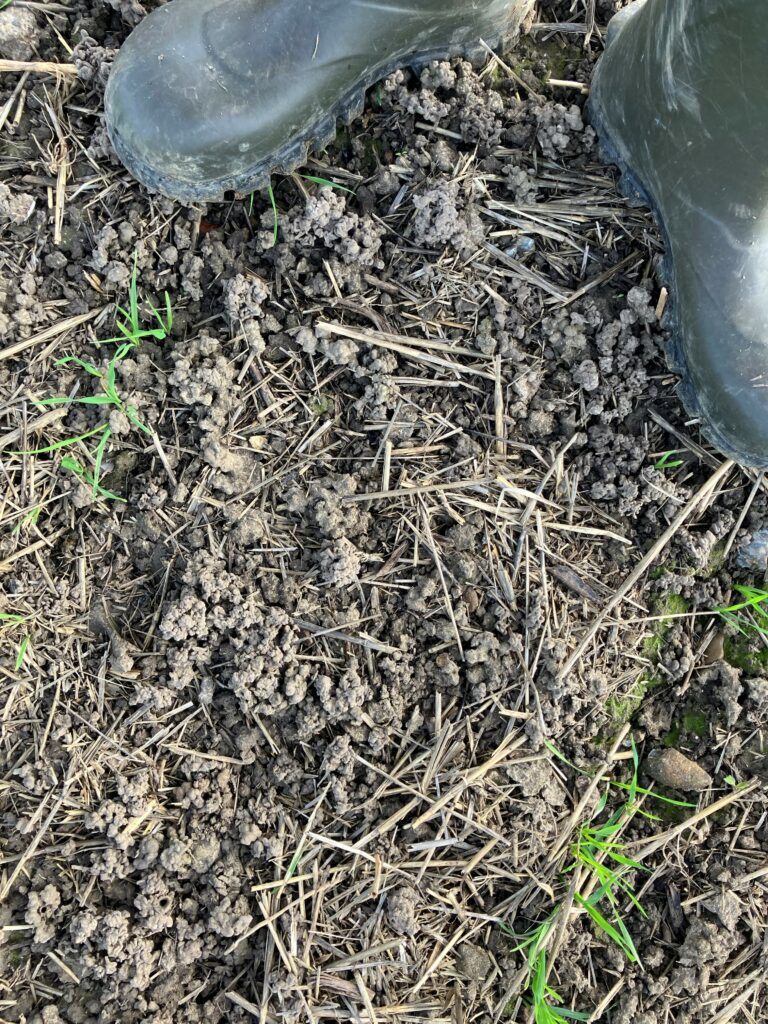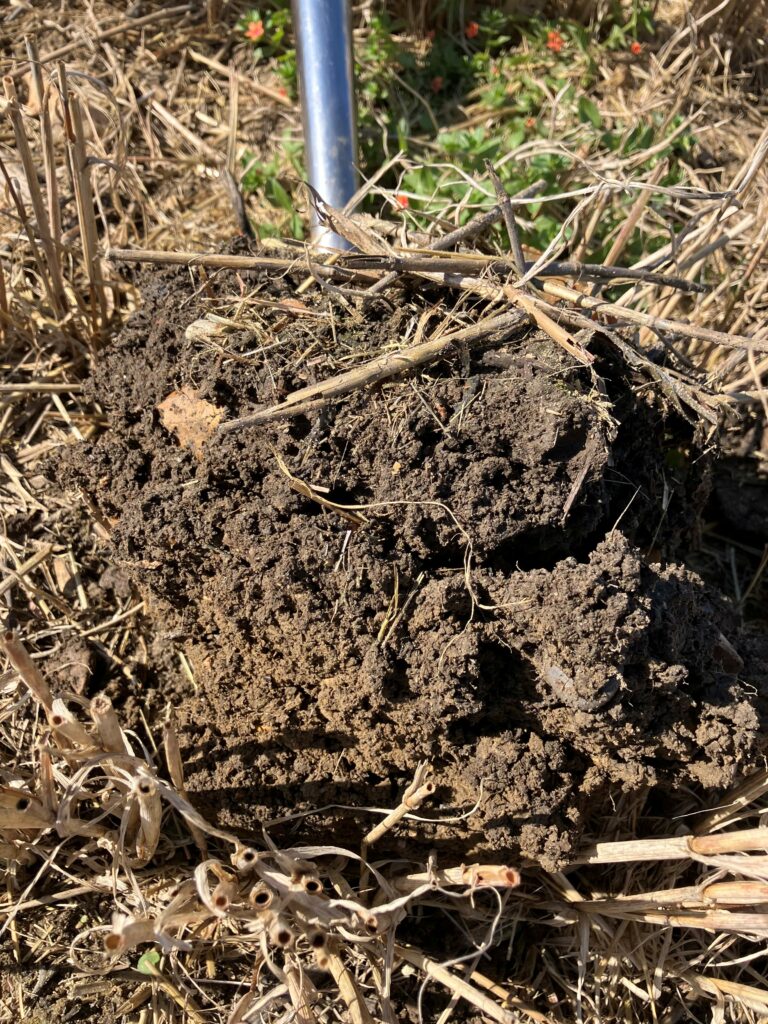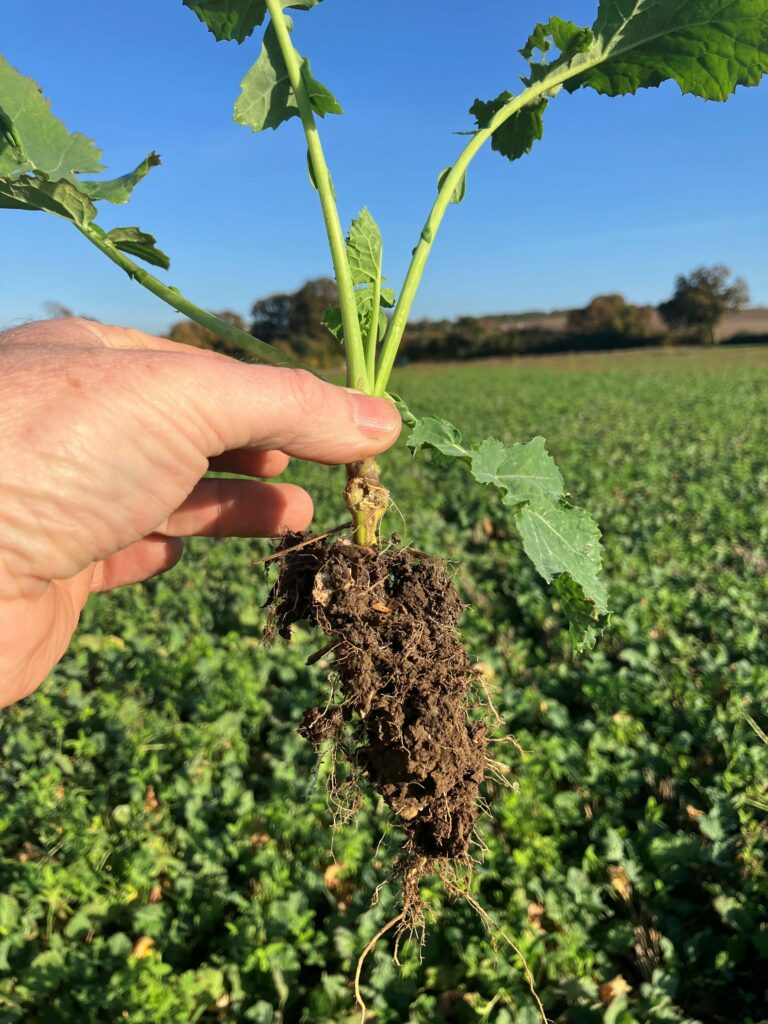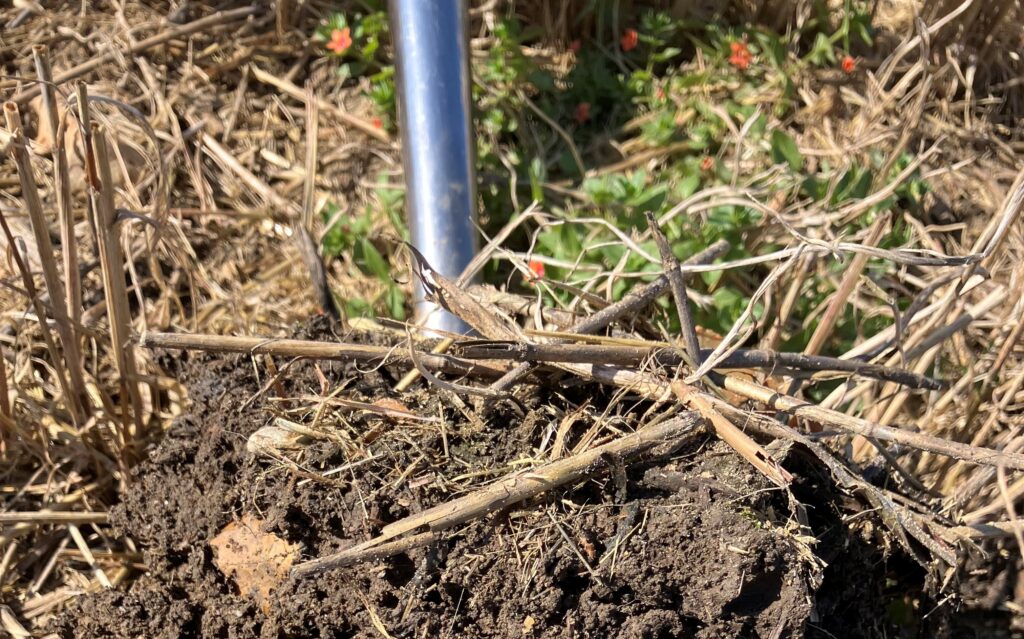With harvest well under way in parts of the country we, once again, are thinking about autumn establishment. With commodity prices under pressure, and support measures falling away, what are you doing to cut cost and attempt to maintain profitability. Being a soil consultant, I am always going to argue that the soil is the basis of your business. Allowing the soil to function from a fertility, and water management, perspective are critical to a profitable farm business. That is why I believe that employing a soil management system, or at least elements of it, is very important. A system such as Conservation Agriculture.
Conservation agriculture (CA) has emerged as one of the most cost-effective forms of crop establishment in the UK, especially in light of increasing economic and environmental pressures on farmers. At its core, conservation agriculture is defined by three main principles: minimal soil disturbance (no-till or reduced tillage), permanent soil cover (using crop residues or cover crops), and crop rotation. This sustainable approach not only addresses environmental concerns but also significantly reduces operational costs, making it an attractive option for UK farmers aiming to enhance profitability while maintaining soil health and long-term productivity.
Reduced Input and Operational Costs
One of the most compelling reasons why conservation agriculture is considered cost-effective is the significant reduction in input and operational costs. Traditional tillage methods involve multiple passes with heavy machinery, consuming large amounts of fuel and contributing to equipment wear and tear. These operations often require substantial labour, particularly during peak planting and harvesting seasons. By contrast, CA methods—especially no-till or minimum-till systems—reduce the number of field operations required, thereby cutting down on diesel usage, labour, and machinery maintenance costs.
For example, a conventional plough-based system may involve several sequential operations: ploughing, cultivating, drilling, and rolling. Each of these steps incurs costs in terms of fuel, time, and equipment usage. In contrast, conservation agriculture can reduce these to a single pass with a direct drill, achieving both seed placement and soil protection in one go. Studies in the UK suggest that farmers can save between £60 and £100 per hectare by adopting direct drilling compared to plough-based systems.
Improved Soil Structure and Health
Healthy soils are fundamental to productive agriculture. Conservation agriculture promotes the buildup of organic matter, enhances soil structure, and improves water infiltration and retention. Over time, this reduces the need for expensive soil amendments and irrigation, further contributing to cost savings. In the UK, where soil erosion and compaction are significant issues—particularly on heavier clay soils—CA helps maintain better soil porosity and prevents degradation, which would otherwise necessitate costly interventions.
Enhanced soil biology under CA also contributes to nutrient cycling, meaning farmers may be able to reduce their reliance on synthetic fertilisers over time. This is particularly relevant as fertiliser prices remain volatile and subject to global supply disruptions. Healthier soils with improved microbial activity and root systems can access nutrients more efficiently, lowering the overall nutrient input requirement.



Weather Resilience and Reduced Risk
Conservation agriculture offers increased resilience against the UK’s increasingly unpredictable weather patterns. Soils managed under CA tend to be more stable and better able to withstand heavy rainfall, reducing the risk of waterlogging and erosion. In dry periods, the moisture-retaining capabilities of residue-covered soils can sustain crops better than those in bare, tilled fields. This resilience reduces the risk of crop failure or yield reduction, which in turn lowers the financial risk for farmers.
Weather-related delays in fieldwork, which are common in traditional tillage systems, can also be mitigated under CA. For instance, the ability to plant directly into stubble or cover crops allows for quicker responses to short planting windows. This timeliness is particularly important for maximising yields, and reduced delay equates to greater efficiency and reduced financial loss.
Long-Term Economic Sustainability
While the initial transition to conservation agriculture may require investment in new equipment, such as direct drills, these costs are generally offset over time by lower variable costs and more consistent yields. Moreover, investment in new drills may not be required, quite often it is possible to adapt and utilise existing kit.
Over time, the cumulative benefits of improved soil health, reduced input costs, and enhanced crop resilience lead to a more sustainable and predictable farming system. This long-term economic stability is especially valuable in the volatile market conditions of modern agriculture, where input costs and commodity prices can fluctuate dramatically.
Environmental and Market Advantages
Beyond direct economic benefits, CA offers advantages in environmental stewardship, which is increasingly linked to market access and subsidies. Reducing greenhouse gas emissions from fewer machinery operations and promoting carbon sequestration in soils can help UK farmers meet carbon reduction targets. Additionally, retailers and consumers are placing growing emphasis on sustainable sourcing, which may translate into price premiums or preferential contracts for CA-grown produce.
In the UK context, conservation agriculture represents the most cost-effective form of crop establishment when viewed through both short-term savings and long-term sustainability. By reducing operational inputs, improving soil health, increasing climate resilience, and aligning with environmental policy incentives, CA offers a viable path for farmers to maintain productivity while securing financial viability. As farming faces increasing pressures from climate change, regulatory shifts, and economic uncertainty, conservation agriculture provides a practical, profitable, and forward-thinking solution for crop establishment in the UK. There are elements of CA that should be considered between harvest and autumn drilling, such as cover crops for sunshine capture and conversion to ‘liquid carbon’ which feeds the soil. Never miss an opportunity to capture sunshine.



